Laying schemes for a warm water floor: analysis of the most effective installation options
A warm water floor can be an additional source of heating or serve as the main heating system. The effectiveness of the complex largely depends on competent design. An important role will also be played by the selected scheme of a thermal water floor — the method, step, and “drawing” of pipe laying.
Before proceeding with the design of the heating circuit, it is necessary to study the general principles of installation of the system, select pipes and calculate the warm floor. All these points are detailed in the article. In addition, we prepared a detailed algorithm for drawing up a diagram and provided practical tips on organizing floor heating.
The content of the article:
Features of designing warm floors
The warm floor of the water type has long been known and quite popular. Narrow pipes are placed in a concrete screed under a suitable floor covering. The system allows hot coolant, which heats the room. Of course, the system does not only consist of pipes and couplers, it includes many other important elements.
This type of heating gives better heating compared to traditional pipe systems. Heat enters from below and gradually moves up. As a result, the room is heated more evenly.
It is believed that using such a system can save about 25% of heating costs. This is due not only to the quality of heating, but also to the relatively low temperature of the coolant, which should not be higher than 50 ° С.
Since the pipes are hidden, direct contact with the heaters, i.e. the likelihood of burns is completely excluded. The interior will only benefit from such a solution, because there is no need to install radiators, grilles for them, etc.
On the warm floor you can walk barefoot, some housewives lay washed clothes on the surface, it dries out very quickly.
However, it is worth noting that such a system has significant disadvantages. For starters, this is a very difficult installation, which must be done very carefully. In addition, this option is not available to everyone.
You can easily install water systems in almost any private buildings, but for apartment buildings there are serious restrictions.
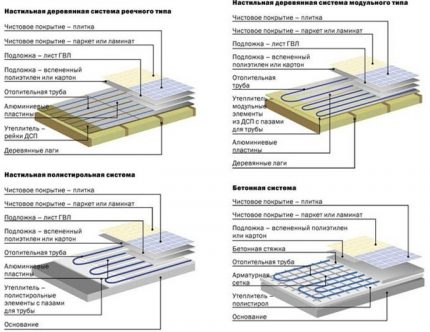
Here, such systems can only be done on the ground floor, and after coordination with a number of organizations. Initially, central heating systems were not designed for such modifications, so you will need to make sure that the alteration does not violate the hydrostatic balance of the system.
Consider the solid weight of the screed and the risk of leakage. It will not be easy to identify the place of damage to the pipe hidden under the screed, and it is almost impossible to quickly fix the breakdown in such a situation.
Therefore, in the apartments of high-rise buildings, the sale of underfloor heating under any installation scheme is prohibited, it is recommended to give preference to electrical systems.
Water options are so highly efficient and economical only in rooms with good thermal insulation.
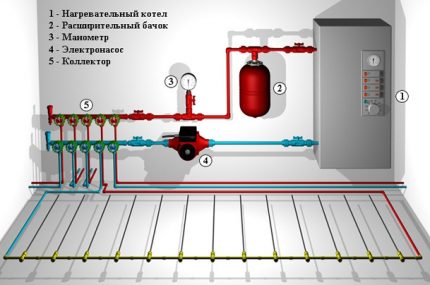
Before installing any heating system, it is recommended to insulate the building, check the reliability of windows and doors, and for the water system this is especially important, because the temperature of the coolant must remain low.
And if you use a floor covering that is sensitive to overheating, for example, linoleum or laminate, then you will have to carefully monitor the temperature level.
In addition to the concrete system, there are also so-called flooring options. When using them, instead of concrete screed, ready-made materials are used that do not need long-term drying. The installation time for flooring technology is much shorter, but here the costs will increase markedly.
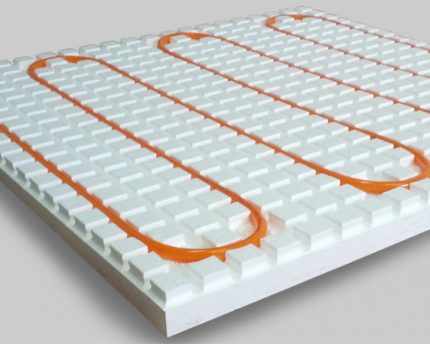
Depending on the materials, the following systems are distinguished:
- polystyrene;
- rack and pinion;
- modular wooden.
The collector for the underfloor heating should be equipped with shut-off valves for each individual hinge, so that the possibility of quick shutdown remains. This function can be useful not only in case of breakdown.
If some rooms are not used in the winter, you can block the flow of coolant to the circuit serving them, which will reduce the cost of heating the entire house.
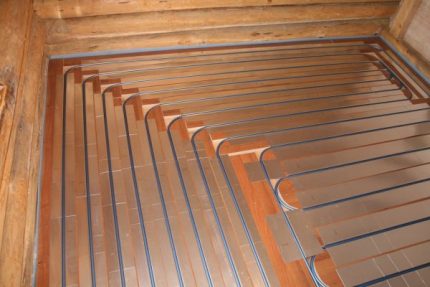
Most often, metal-plastic communications are used to equip such systems, which are relatively inexpensive, quite reliable, and installing them is not so difficult.
Another option is copper pipes. They are not often used in such systems, mainly because of the high cost. But such communications are extremely reliable, so it makes sense to consider this option.
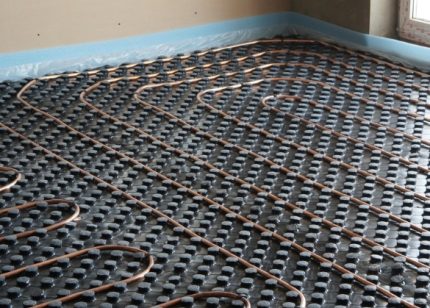
Read more about choosing pipes for a warm water floor. this article.
General principles of installation of water-type systems
First you need to prepare the base: level it and clean it from contamination. After this, a layer of thermal insulation is laid, often for this use plates extruded polystyrene foam.
Such material comes in the form of slabs that are not difficult to install. After that, the insulating material is covered with a waterproofing film.
Before starting installation, a damper tape is placed around the room to compensate for thermal expansion during operation of the system. On large areas, it is installed not only along the walls, but also in the seams passing in the middle of the room.
If the insulation and tape are laid correctly, the film can be carefully tucked over the edge of the insulating material, it will lie flat and with a slight tension.
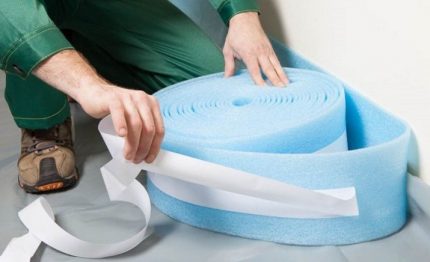
Pipes for hot water must be laid on top of the film, it is at this stage that a scheme for laying a warm water floor should be implemented, it is selected in advance. Pipes should be laid evenly, trying to maintain an equal distance between them to achieve uniform floor heating.
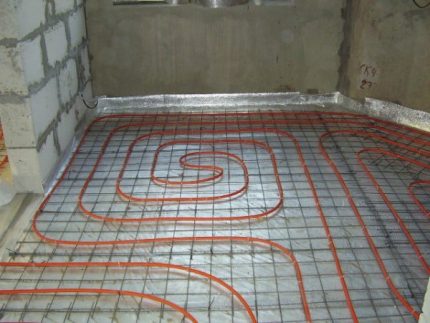
Stacked communications connect to distribution manifoldthrough which they are connected to the heating system of the house, to the boiler, etc. Pipes are poured with a concrete screed, after which it is necessary to wait for it to completely dry. It remains to check the operation of the system and lay the flooring.
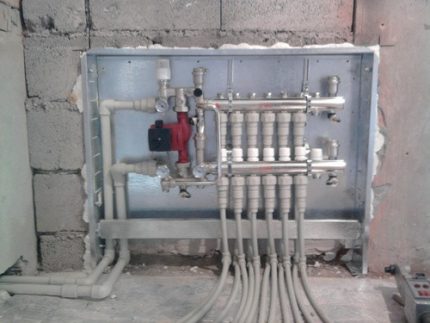
There are no trifles when installing systems of this type. A small error can cause serious damage in the future.
Therefore, it makes sense to take into account a number of useful tips even before the start of installation work:
- It is better to completely dismantle the old screed, and put the waterproofing and insulation on the most solid base, carefully horizontally aligned.
- Do not think that under the screed, the roughness of the base will be invisible, all differences of more than 10 mm must be carefully aligned.
- If several separate circuits of the system are stacked in one room, the space between them should be divided by a damper tape, not limited to its laying around the perimeter.
- In small areas, it is quite acceptable to use penofol as a heater.
- Over the unheated basement or on the ground, you need to make the most reliable insulation, for example, a layer of expanded clay and a polystyrene foam plate of at least 50 mm thick.
- When attaching pipes to the net, do not tighten the ties too tight so as not to damage the pipe.
- The pipe diameter for such a system can vary between 16-20 mm, the material must be designed for a pressure of at least 10 bar and heating to 95 degrees.
- With a limited budget, you should not spend money on pipes with options in the form of additional protection, although reinforcing polypropylene communications with fiberglass will not be superfluous.
- To automate the system, you must correctly select and install the collector, complementing its design with servos, pressure sensors, air vents and other useful devices.
- The collector's box is placed in a niche on the wall, it must rise above the floor high enough so that the pipes entering it can be correctly bent.
- All pipes must exit the manifold downward, and never upward, to ensure the correct operation of devices for venting air entering the system.
- It is not recommended to make a niche for the collector in the bearing walls, if there is no other option, it is better to simply install the cabinet on the wall, and not inside it.
For obvious reasons, it can be very difficult to fix flaws after the installation of such a system is completed, so all operations should be performed very carefully. For example, each loop should consist of one solid pipe, no adhesions or any other connections are allowed.
Designing and designing
Design is the first step in creating underfloor heating systems.First you need to think about whether it will be the main heating or only an auxiliary option.
After that, you need to take a sheet of paper and make a plan for the placement of stationary furniture in the room. For example, it makes no sense to warm the ceiling under the built-in wardrobe or under the automatic washing machine.
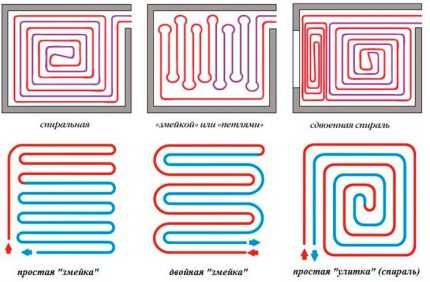
It should be noted the position of each such object and indicate the exact dimensions. After that, you can leave a specific layout of pipes. Usually only two main types of layouts are used. One of them is called a snake, and the second - a spiral or a snail. The first option is easier to implement.
Pipes are laid from one edge of the room to the other, and then brought back to the collector. But this method has a significant drawback. The coolant moving along the pipe will gradually give off heat and cool. As a result, the long pipe will be much hotter at the beginning than at the end.
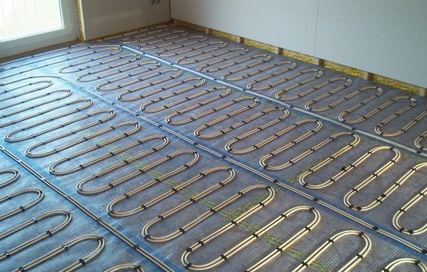
In small areas, this difference does not matter, but in a spacious room, the floor in different parts will warm up unevenly. To avoid a similar problem, use a snail circuit. In this case, the pipe is carried out first along the walls along the perimeter, moving to the center of the room.
Here the pipe should form a neat loop. From the center, the gasket continues in the opposite direction parallel to the already laid pipe. It turns out that the coolant that has reached the center of the room, when returned in a reverse spiral, will absorb part of the thermal energy of the fresh coolant.
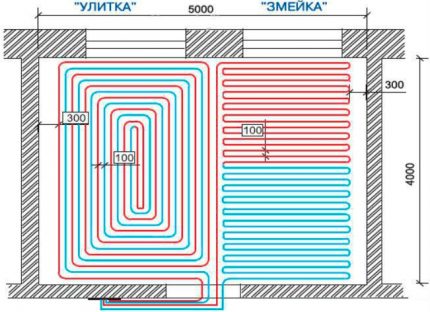
When choosing a wiring diagram for a water heated floor in an apartment, you need to consider the size of the room. For example, in the corridor or the bathroom you can get by with a snake, but in large areas you need to use spiral styling.
To place a complex configuration, it is recommended to use a combined version. If it is not possible to lay out the correct spiral everywhere, then individual small sections can be decorated with a snake.
Another important point that affects the quality of heating is the length of each pipe segment. It should be approximately the same to ensure uniform flow of coolant and high-quality heating of all sections of the floor.
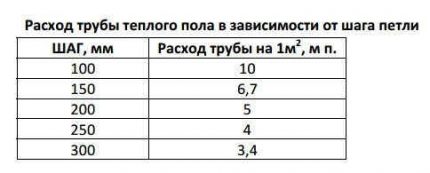
Sometimes a snake-type circuit may be suitable for those rooms that cool unevenly. It is necessary to organize it in such a way that the beginning of the pipe, where the hot coolant enters, is in the same place as the coldest zone.
They also combine different schemes when passing through such small rooms as a balcony, a loggia, etc.
They begin to draw up a design diagram with the definition of heat loss. At this stage, you should think about the thermal insulation of the room and take, if necessary, additional measures: to insulate the facade, insulate the ceiling, repair windows, put new doors, etc.
Based on the data obtained, it is determined how many pipes will be needed, with what step they need to be laid and other system parameters.
After that, you can begin to draw up a pipe-laying scheme.
First of all, you need to choose a suitable place for the collector. If you plan to heat only a separate small section of the room (bathroom, pantry, corridor), then it will not be difficult to cope with the plan.
But do not think that if the area is small, then all the work can be done “by eye”. The exact parameters for a large house are not easy to determine, it is better to entrust the execution of all calculations to an experienced specialist.
In addition, there are programs that help carry out calculations in automatic mode. If you plan to install a warm floor in a complex building, it is better to ask the engineer for help.
To perform the calculations necessary for system design, the following parameters should be used:
- length, width and configuration of the room;
- type of thermal insulation material used;
- material of walls and floors;
- selected material for flooring;
- the diameter of the pipes through which the coolant will circulate;
- what material will communications be made of.
After processing the data, the pipe length required for each specific section will be obtained, as well as the step that must be followed for each section.
On large areas, it is not always possible to heat such rooms using only one long pipe. Most likely, it will have to be divided into several segments for laying in different areas.
This is also associated with such an important indicator as the hydrostatic resistance of the system. The greater the length of the pipe, the higher its resistance. The number of turns can also affect this indicator.
Typically, calculations for the warm floor are performed separately for each room. It should be remembered that you can not lay pipes close to the walls, you need to retreat about 10 cm.
The pipe is laid with a step that varies between 10-30 cm. A step between the pipe turns of 30 cm is considered normal. When passing through difficult sections where heat loss is higher, the step is made smaller - 15 cm.
Pipe installation should begin from the outer wall, which is colder and needs additional heating. It is not always possible to carry out installation in this way, in this case it is recommended to additionally insulate the pipe in the area from the entrance to the room to the cold area.
This will save some of the thermal energy in order to use it in such a problem area.

If the system calculations are unprofessional, this can lead to serious problems that will only be identified during operation. This can be a usual uneven floor heating, when in some areas the heating is stronger, and the so-called “thermal zebra”.
In this case, cold and warm streaks form on the floor, which makes the use of the system extremely uncomfortable.
Correcting this situation will not be easy, you will need to practically dismantle the entire system and perform installation again in accordance with the correct calculations.
Less obvious problems that arise due to flaws in the design are heat leakage and a decrease in the speed of movement of the coolant. As a result, heating costs will increase, but the house will not be heated properly.
Read more about the calculations in the articles:
- Calculation of pipes for underfloor heating: selection of pipes according to parameters, choice of laying step + calculation example
- Screed on a warm water floor: a choice of thickness and popular methods of installation
Some experts recommend allocating for loggia and balcony heating, as well as rooms with increased heat loss, a separate circuit. This will bring a sufficient amount of heat to the balcony and to the room adjacent to it.
Conclusions and useful video on the topic
Detailed information on the installation of systems of this type is contained in the video material:
Water heated floor - the system is convenient, but you should not call it easy to install. Proper design, accurate calculations, selection of high-quality materials and elements will create a truly effective heating option.
Do you have personal experience in designing and arranging a water heated floor? Want to share your knowledge or ask questions about the topic? Please leave comments and participate in discussions - the feedback form is located below.

 Mats for underfloor heating: selection tips + styling guide
Mats for underfloor heating: selection tips + styling guide 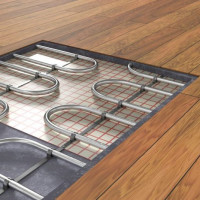 Insulation for warm water floors: rules for selection and installation
Insulation for warm water floors: rules for selection and installation 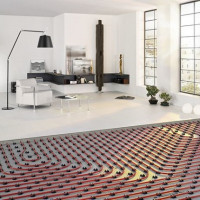 Pipes for underfloor heating: a comparative overview of all options + design tips
Pipes for underfloor heating: a comparative overview of all options + design tips 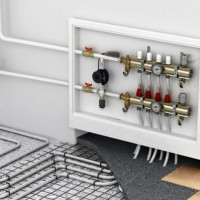 Water underfloor wiring diagram: versions and device manual
Water underfloor wiring diagram: versions and device manual 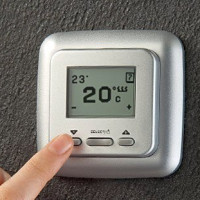 Thermostat for underfloor heating: principle of operation + analysis of types + installation tips
Thermostat for underfloor heating: principle of operation + analysis of types + installation tips 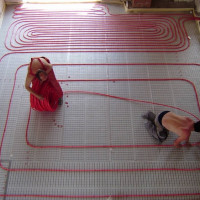 Calculation of pipes for underfloor heating: selection of pipes according to parameters, choice of laying step + calculation example
Calculation of pipes for underfloor heating: selection of pipes according to parameters, choice of laying step + calculation example  How much does it cost to connect gas to a private house: the price of organizing gas supply
How much does it cost to connect gas to a private house: the price of organizing gas supply  The best washing machines with dryer: model rating and customer tips
The best washing machines with dryer: model rating and customer tips  What is the color temperature of light and the nuances of choosing the temperature of the lamps to suit your needs
What is the color temperature of light and the nuances of choosing the temperature of the lamps to suit your needs  Replacement of a geyser in an apartment: replacement paperwork + basic norms and requirements
Replacement of a geyser in an apartment: replacement paperwork + basic norms and requirements